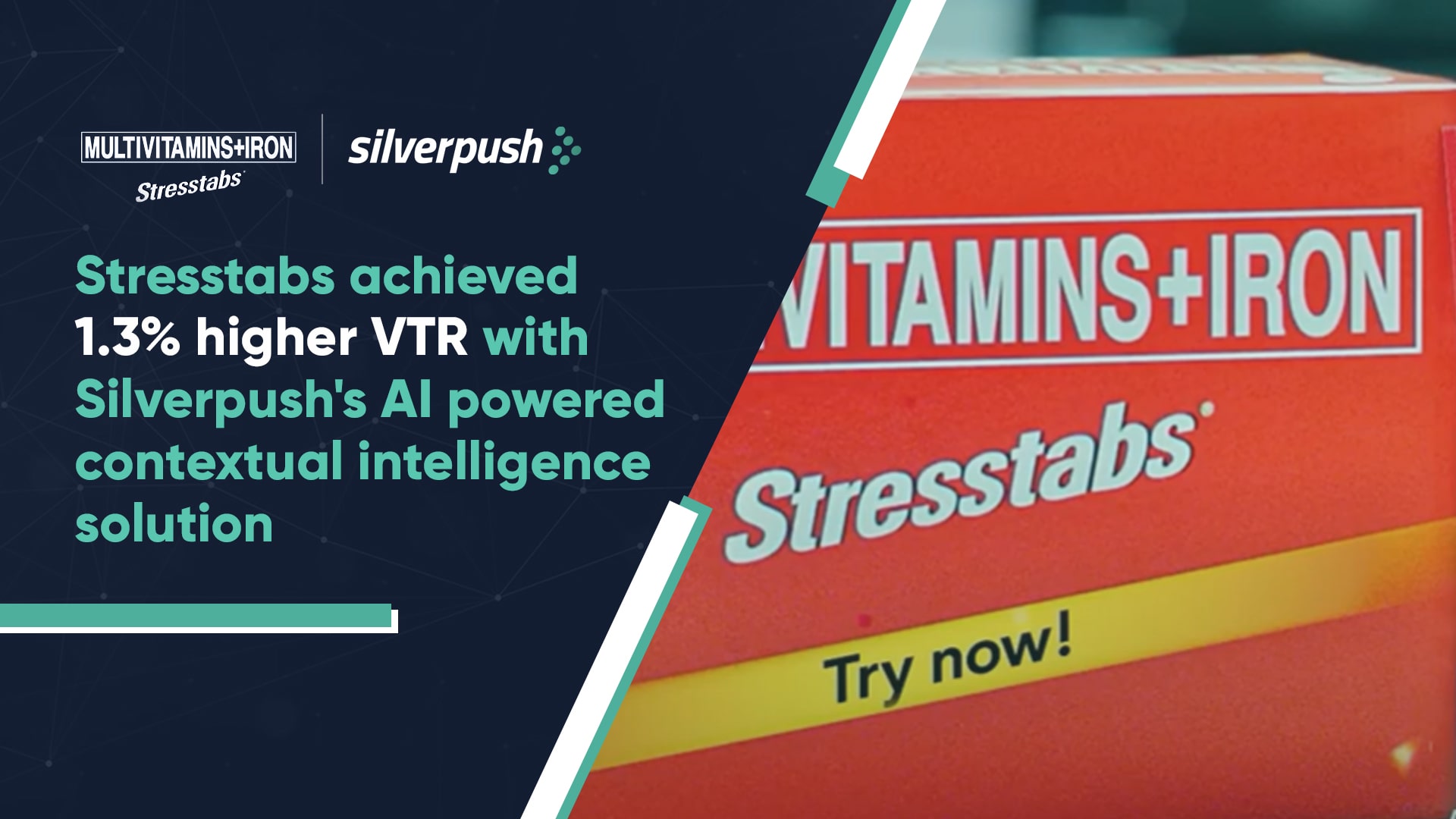CES 2025 Key Takeaways: Q&A with Blaise Lucey
PUBLISH DATE: 16 January 2025
Last week, the SIlverpush team kicked off the New Year at CES 2025 in Las Vegas. More than 140,000 tech professionals from every corner of the industry attended the event. At Silverpush, we hosted our first Context & Conversations series, where we hosted agencies and brands at dinners and learning sessions. We also hosted a sold-out happy hour with Beet.TV, where the conversations were all about the future of advertising and the future of context.
Blaise Lucey, senior director of marketing for North America, took some time to talk about the biggest trends he saw at CES this year and what it means for the rest of 2025.
Q. What were the standout themes at CES 2025 that you believe will have the biggest impact on advertising?
There are three main themes that got the most attention at CES: retail media, CTV, and AI. In the retail media space, there are now 200+ retail media networks today, so a lot of different players in the space were there to showcase different offerings. I actually had my best coffee at the Walmart Connect lounge!
When it comes to CTV, there’s an explosion of innovation and fragmentation in the market. And with AI, AI is truly everywhere. Now, it’s a matter of using it the right way.
Q. How do you see the advertising landscape evolving in response to the trends showcased at CES?
In a way, digital advertising is always evolving around the same thing: the need to reach the customer and figure out what happens next. That’s why things always seem to come back to data. But with so many new layers, the industry has to think about data in new dimensions. From CTV to DSPs and PMPs, agencies and brands and vendors, metrics, attribution, and retailers, the “tech stack” for brands and agencies is now definitely a “data stack.” Or, more accurately, a “partner stack.”
A lack of data is no longer the problem. It’s just finding out what all the data means in the first place. AI is coming at a critical time: to try and cut through the noise and make sense of what insights are the most important. AI-powered data is going to be what helps advertisers understand all that data from a new perspective.

Q. What was your biggest “oh wow” at CES this year?
For some reason, I think it was the giant screen outside the Aria that kept showing an ad for Microsoft Copilot. When I caught up with John Marshall from dentsu, who helped with the activation, we talked about context and he used that specific activation as an example of why context was so important: a digital-out-of-home experience is a context-first advertisement by default. If the placement had gone live during a Raiders game, it would have been out of context and it wouldn’t have been as effective. With more than a hundred thousand people from the tech industry in Vegas, the billboard stood as a two-hundred foot example of contextual advertising in action.
Q. CTV continues to dominate conversations be it in advertising or during these events. What insights did CES 2025 offer about its current trajectory and future potential?
There were a lot of CTV announcements and activations during CES. I even saw a guy with a hat that just said “CTV.” The big priority in the CTV space is all about measurement and transparency. CTV ads are relatively expensive, so advertisers want to know that the ads are worth the cost and the placements are delivered to the inventory that matters most.
During CES, Disney released Disney Compass as a way to give media buyers more direct access to Disney’s data and the data from Disney’s identity and measurement partners. Roku, the streaming OS with 90 million streaming households, launched the Roku Data Cloud to help partners analyze and access Roku’s data.
With so many different hardware and software players in the space, the next step is trying to bring it all together for more transparency. These announcements and others show a lot of progress, but we’re still a long way off from seeing that happen.

Q. How does Silverpush play a role in these new trends?
Great question! Let me break down by the trends that I listed:
1. CTV
Right before CES, Silverpush announced our extended partnership with Iris.TV and Innovid to enable video-level contextual measurement for CTV. This is a big deal: by showing the results of each contextual strategy, Silverpush shows media buyers what tactics drive the best performance across awareness, consideration, and conversion metrics.
We’ve also seen a lot of demand for contextual CTV segments in general. With video-level contextual targeting, media buyers can exclude episodes, instead of entire series, channels, or apps – and target campaigns at the episode-level, too. Video-level contextual advertising offers a new layer of precision for a complex ecosystem, with none of the red tape that comes with working with data across partners.
2. AI
Everything that Silverpush is building today has a foundation with AI. We’ve got a lot of exciting things to unveil over the coming weeks and we are laser-focused on how AI can create more meaningful – and contextual! – experiences by turning data into insights and insights into action.
Our Mirrors AI is a great example of how this works. By processing millions of videos and billions of impressions across the YouTube ecosystem, the contextual AI model optimizes for the best possible context for each moment of a viewer’s experience. This drives much higher view-through rates, click-through rates, and ad efficiency – and makes viewers less likely to skip the ad.
3. Retail Media
Retail media is one of the fastest-growing spaces in the ad industry today. Advertisers are also starting to think about how to connect all the dots from retail media ads back up to their owned channels, retargeting tactics, and video advertising strategy. There’s a lot of exciting ways that context can drive better retail media experiences and we can’t wait to share more down the line.
Want to know how Silverpush can help you across these trends? Contact us today to know more
Here’s Silverpush’s New Year’s “ROI-solution” for 2025!
PUBLISH DATE: 01 January 2025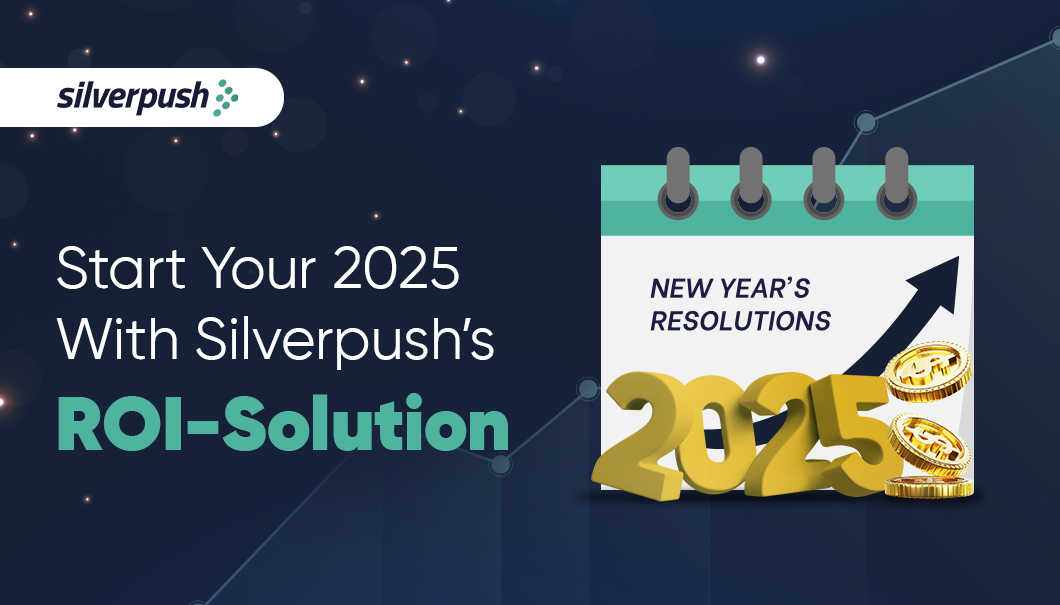
As 2025 unfolds, the ad tech ecosystem is buzzing with new opportunities for brands to connect with their audiences in smarter, more effective ways. However, this dynamic landscape also brings challenges, especially as privacy regulations tighten and consumer expectations evolve. Marketers and advertisers now face the critical task of balancing transparency, relevance, and measurable impact. Achieving these goals requires more than innovation—it demands strategic, results-driven solutions that deliver tangible ROI.
Silverpush’s “New Year’s ROIsolution” redefines the rules of advertising in 2025. By leveraging cutting-edge AI, and privacy-first principles, Silverpush empowers brands to navigate this shifting ad tech market while achieving sustainable growth and meaningful engagement.
Lead Contextual Advertising Innovation with Mirrors
In a digital world where consumers expect relevance, traditional targeting methods are struggling to keep up. Generic keyword strategies and broad audience assumptions often fail to deliver the engagement brands need. That’s where Mirrors, Silverpush’s contextual intelligence platform, steps in to transform ad placements into meaningful connections.
Powered by advanced AI, Mirrors deeply analyzes digital environments to align ads with the context that resonates most with consumers. From pairing skincare ads with beauty tutorials to syncing wellness campaigns with fitness content, Mirrors ensures seamless relevance. This contextual precision not only enhances engagement but also elevates the consumer experience.
What sets Mirrors apart is its ability to combine scalability with human oversight, ensuring both accuracy and reliability. It also includes robust brand safety measures, offering customizable filters to keep ads in appropriate environments. By focusing on context instead of cookies, Mirrors is reshaping the ad tech ecosystem, helping brands drive higher ROI while safeguarding their reputation.
Build a Privacy-First Ad Ecosystem
Privacy isn’t just a checkbox; it’s now a foundational element of modern advertising. Consumers demand transparency, and regulations like GDPR and CCPA enforce strict compliance. As consumers become more aware of the privacy regulations and usage of third-party cookies, brands are compelled to rethink their strategies for delivering personalized experiences without compromising trust.
Silverpush’s privacy-first ad tech solutions enable brands to thrive in this cookieless era. By using “contextual” as the go-to method to deliver ads in the right context to the right audience, brands do not need to rely on third-party cookies.
This commitment to privacy strengthens consumer trust and aligns with global regulatory requirements. Brands that embrace these practices not only protect user data but also position themselves as ethical leaders in the ad tech industry—building long-term loyalty and driving impactful results.
Drive Smarter Connections Between Consumers and Commerce
Real-time moments like a thrilling sports victory, an unexpected weather shift, or a viral cultural trend hold immense potential for engaging audiences. These fleeting opportunities demand agility and precision to capture consumer attention. However, traditional ad strategies often fail to harness the immediacy of these moments.
Parallels by Silverpush bridges this gap by syncing ads with real-world events. For instance, a beverage brand can trigger ads during a sports game’s pivotal moment, or a fashion retailer can align campaigns with trending cultural milestones. This approach ensures that ads feel natural and timely, turning spontaneous moments into impactful brand connections.
By leveraging real-time data, Parallels empowers brands to deliver hyper-relevant messaging that resonates with consumers. The result? Higher engagement, stronger loyalty, and a significant edge in today’s competitive ad tech landscape.
Deliver Sustainable and Efficient Advertising
Sustainability has evolved from being just a buzzword to becoming a crucial demand from consumers that the advertising technology industry must address. Legacy methods in advertising struggle to minimize impression waste. Silverpush tackles this issue by prioritizing efficiency through precise targeting.
At Silverpush, AI-driven contextual targeting ensures that ads reach the right audience with precision, reducing wasted impressions and increasing ROI. By cutting down irrelevant ad placements, we save resources not only for brands but also champion a greener approach toward advertising in order to contribute to reducing digital carbon footprints. With each campaign, we are helping brands align their goals with sustainability and efficiency.
Smarter placements with Silverpush mean:
- Improved impact due to optimized campaigns
- Enhanced cost efficiency with fewer wasted impressions
- Alignment with consumer values on sustainability
By prioritizing sustainable practices, Silverpush helps brands achieve their goals while contributing to a healthier planet.
Advance Brand Safety and Suitability
In today’s fast-paced digital world, where a single misstep can significantly harm a brand’s reputation, ensuring that ads appear in safe and relevant environments is more important than ever. The complexity of the digital landscape poses unique challenges, as unsuitable or controversial content can inadvertently impact a brand’s image.
To navigate these challenges, Silverpush’s advanced contextual analysis solutions play a vital role in safeguarding brand values. By thoroughly understanding the digital environment, ads can be placed in culturally appropriate and risk-free contexts, protecting brands from negative associations and aligning placements with their core principles.
This approach helps brands:
- Build trust with consumers through strategic and secure placements.
- Preserve their reputation by avoiding harmful or irrelevant content.
- Foster consumer confidence with contextually relevant and impactful ads.
By prioritizing brand safety, businesses can maintain credibility and continue thriving in an ever-evolving ad tech ecosystem.
Multicultural and Audience-Centric Solutions
Diverse audiences demand authentic representation, and brands that embrace multicultural marketing set themselves apart. Consumers want campaigns that reflect their identities and values, making inclusivity a non-negotiable aspect of modern advertising.
Silverpush goes beyond surface-level representation by leveraging culturally relevant contextual targeting. Its ad tech solutions pair campaigns with content that aligns with the values and behaviors of diverse audiences. From celebrating Ramadan to recognizing Pride Month, these strategies help brands foster genuine connections and build emotional resonance.
By embracing multicultural marketing, brands can:
- Enhance engagement through culturally tailored messaging.
- Build loyalty by authentically connecting with diverse communities.
- Establish leadership in the inclusive ad tech ecosystem.
Deepening Content Understanding
Advancements in AI and machine learning have revolutionized content analysis, offering brands unmatched precision in targeting. Silverpush’s technology solutions delve deep into context, identifying nuanced consumer interests to ensure ads align seamlessly with content and audience intent.
This deeper understanding enables brands to:
- Create campaigns that feel organic and meaningful.
- Improve performance through sharper audience targeting.
- Deliver ads that integrate naturally within the digital environment.
In 2025, deep content understanding isn’t just an advantage—it’s a necessity for staying ahead in the ad tech ecosystem.
To Conclude
As the ad tech industry continues to evolve, success in 2025 hinges on leveraging tools that align with consumer expectations and values. Silverpush’s innovative platforms, like Mirrors and Parallels, redefine advertising by emphasizing privacy, contextual relevance, and sustainability. By deepening content understanding, driving real-time connections, and fostering inclusivity, Silverpush empowers brands to thrive in a competitive landscape.
Let’s make 2025 the year of smarter, more impactful advertising together.
Why Emotional Context Matters More Than Ever in CTV Advertising
PUBLISH DATE: 26 December 2024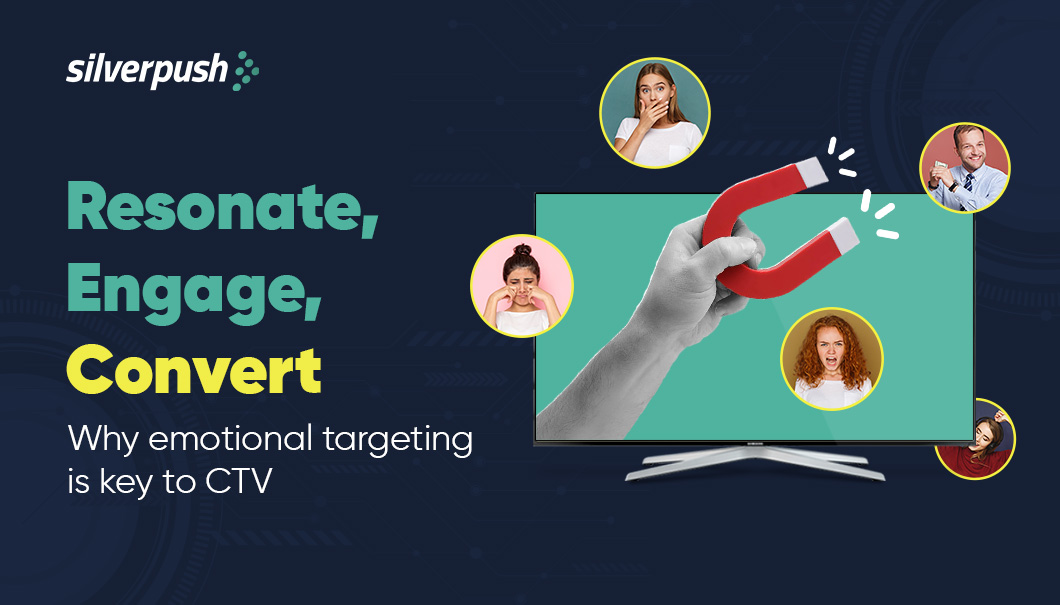
Have you ever watched a heartfelt movie moment only to be jolted by an overly peppy commercial? Yeah, we’ve all been there. This mismatch is why getting your ad’s emotional timing right has never been more crucial, especially as CTV viewership soars to record highs with 67.5 million U.S. households using smart TVs.
Connected TV blends the emotional storytelling power of traditional TV with the sharp precision of digital targeting. But its true potential lies in connecting with audiences at the perfect emotional moment. In this blog, we’ll explore how emotional targeting and advanced technology can transform your advertising strategy.
The Emotional Power of CTV Advertising
At its core, advertising is about storytelling, and no platform does this better than CTV. The big screen, so often the centerpiece of modern homes, offers advertisers a canvas onto which to paint stories that strike an emotional chord. But why does emotion matter so?
Back in 1980, psychologist Robert Plutchik identified eight key emotions that drive human behavior: joy, anticipation, anger, disgust, sadness, surprise, fear, and trust. For advertisers, this emotional palette offers a lot of opportunities. Of course, the element of ‘joy’ is most used, as overall-end happiness is generally what clients want. But the real magic mixes the above many emotions based on your industry:
- Trust is one of the most important feelings or emotions that industries based on finance or insurance build upon, where reliability and credibility head the list.
- Anticipation works magic on food and beverage brands, provoking and evoking the need to indulge.
- Surprise and amazement are the go-to emotions of travel brands, which inspire consumers to dream bigger and explore the extraordinary.
Timing Is Everything in CTV
The formula for effective CTV advertising is relatively simple: right audience + right message + right time = maximum impact. But hitting that sweet spot often comes down to one thing: timing.
The connected TV platform holds an edge over other platforms and grabs attention much more than mobile and desktop combined. Plus, it is non-skippable, unlike ads on mobile or desktop, which can often be skipped, thus securing much better engagement. But couple it with the range of the biggest screen in the house, and you’ve got a recipe for capturing and holding attention.
Real results back this up. Take the Monks agency case study; they saw a 33% boost in brand awareness and 28% better brand favorability just by aligning the emotions of the creative to the content on the screen directly before the ad break. Pretty impressive, right?
Practical Strategies for Emotional Targeting in CTV Advertising
So, how do you tap into emotional targeting in your CTV campaigns?
1. Align Ads with Context
What it means: Match your ad’s emotional tone with what’s on-screen. For example, a nice, peaceful ad about some retreat placed just right after an on-screen dramatic moment helps the audience ease into receiving mode.
How to do it: Adtech solutions like Mirrors AI by Silverpush go beyond genre-based targeting to understand the true meaning of on-screen content. By analyzing contextual and emotional cues, these solutions help place ads at the right moment, ensuring they remain both contextually and emotionally relevant
2. Avoid Emotional Dissonance
Ads that disrupt the moment of the viewer, such as a loud, energetic ad after a somber scene, can result in negative brand perception.
Pro Tip: A/B test your ad placements to make sure they complement rather than clash with content.
3. Harness Advanced Technology for Smarter Advertising
Mirrors AI takes the guesswork out with its cutting-edge AI technology. Unlike traditional metadata-based targeting, Mirrors uses enriched IAB-aligned and custom contextual segments for accuracy. This results in ads that feel timely, relevant, and safe for brands.
4. Refine and Optimize Continuously
Measure this all with CTV analytics to track key metrics such as engagement and view-through rates; if an ad isn’t resonating, tweak tone, timing, or place.
Key Benefits of Advanced Emotional Targeting:-
-
- Reduced complexity in buying and placement
- Privacy-compliant targeting (HIPAA, GDPR & CCPA compliant)
- Brand safety and suitability controls
- High-quality placement verification
Final Thoughts
Connected TV advertising isn’t just about showing ads; it’s about creating meaningful experiences for your audience. By understanding viewer emotions, marketers can craft campaigns that truly resonate, engage, and convert.
With solutions like Mirrors AI, you gain access to cutting-edge tools for brand safety and contextual insights. Whether you’re a digital marketer, a privacy-conscious brand, or an agency ready to elevate your campaigns, now is the time to embrace this approach.
The future belongs to those who connect with audiences not just where they are but how they feel. So, take the leap-start crafting ads that really connect with your CTV audience at the right time, every time.
The Ultimate Advertising Calendar for 2025 Tentpole Events
PUBLISH DATE: 26 December 2024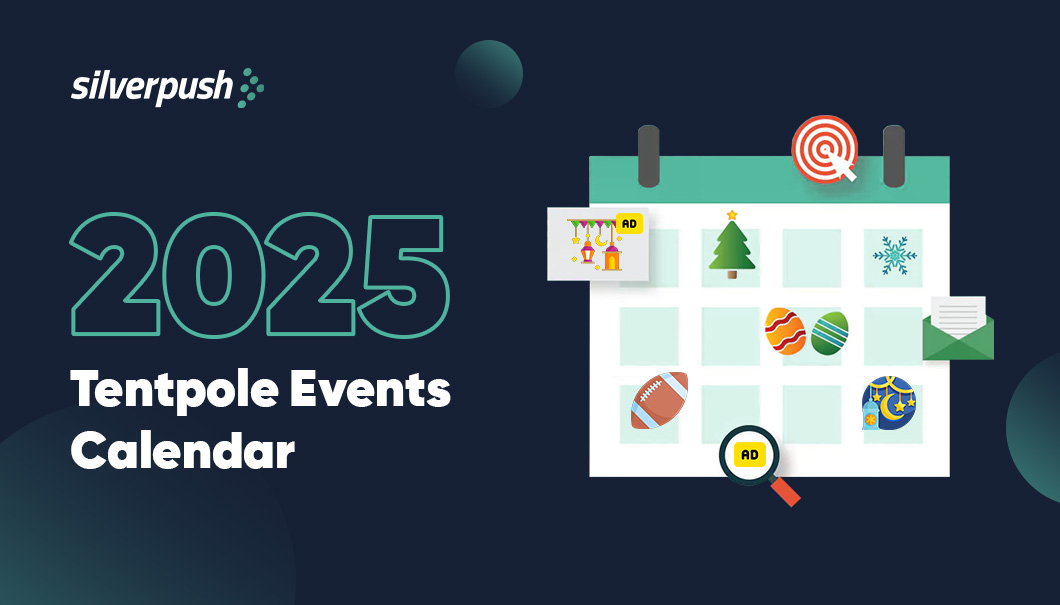
In a world where trends change in the blink of an eye, relevance often feels like some sort of rat race. That is where tentpole events come in: these are key dates and milestones with cultural or industry importance that manage to grab people’s attention, be it the Super Bowl, Valentine’s Day, or even niche happenings like Paris Fashion Week. By anchoring your campaigns around these tentpole moments, you can leverage the momentum of public interest to amplify your visibility and connect with people in ways that feel both organic and timely.
At Silverpush, we know the value of being in the right context at the right time. With our cutting-edge contextual intelligence solutions, we help you harness the power of these events to make sure your ads don’t just show up they stand out. As you plan your advertising calendar for 2025, keep these events in mind. They’re not just dates-they’re opportunities to connect, engage, and grow your brand.
Calendar of Pivotal Tentpole Events for Advertisers in 2025
Here’s a comprehensive tentpole calendar for 2025 to plan campaigns that align with moments people are already excited about.
Holidays & Events in Q1 2025 (January, February, March)
The beginning of the year is a great moment to connect with your audience through tentpole moments that spark excitement and engagement. From New Year’s Day resolutions to the cultural energy of Black History Month to the Super Bowl’s global buzz, Q1 is packed. Be it sports, culture, and seasonal events, this quarter really sets the tone for your year-long marketing strategy as you plan that tentpole campaign.
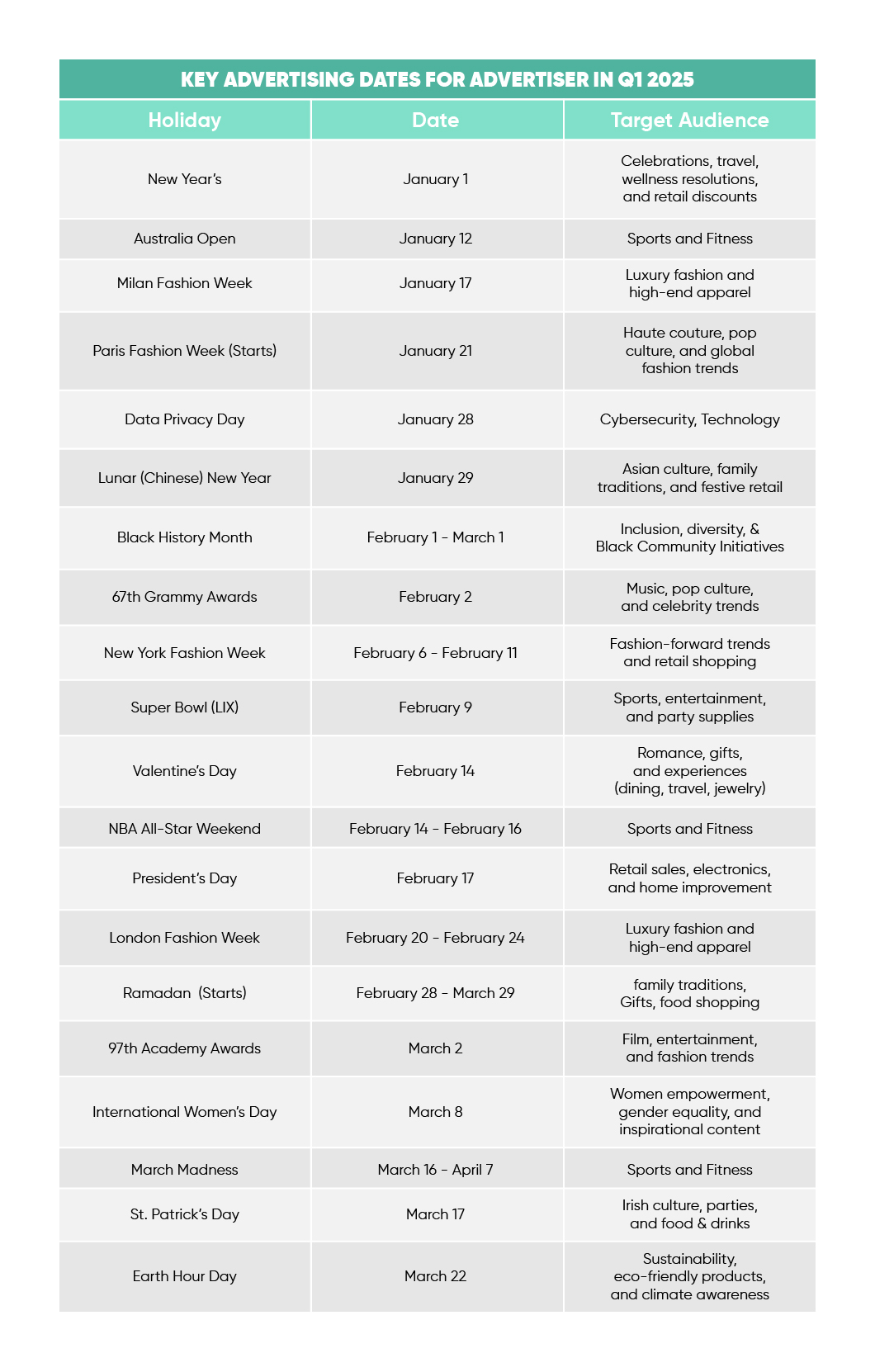
Holidays & Events in Q2 2025 (April, May, June)
Spring brings new energy, and it’s a prime time to align your 2025 advertising calendar with cultural and seasonal highlights. Events like Coachella, Pride Month, and family favorites such as Mother’s and Father’s Day make the quarter ideal for tentpole marketing. Sports fans also tune in for events such as the NBA Finals and UEFA Euro (Men’s), which have campaigns that resonate globally. If you have a solid tentpole strategy, it will help you maximize reach and impact in Q2.
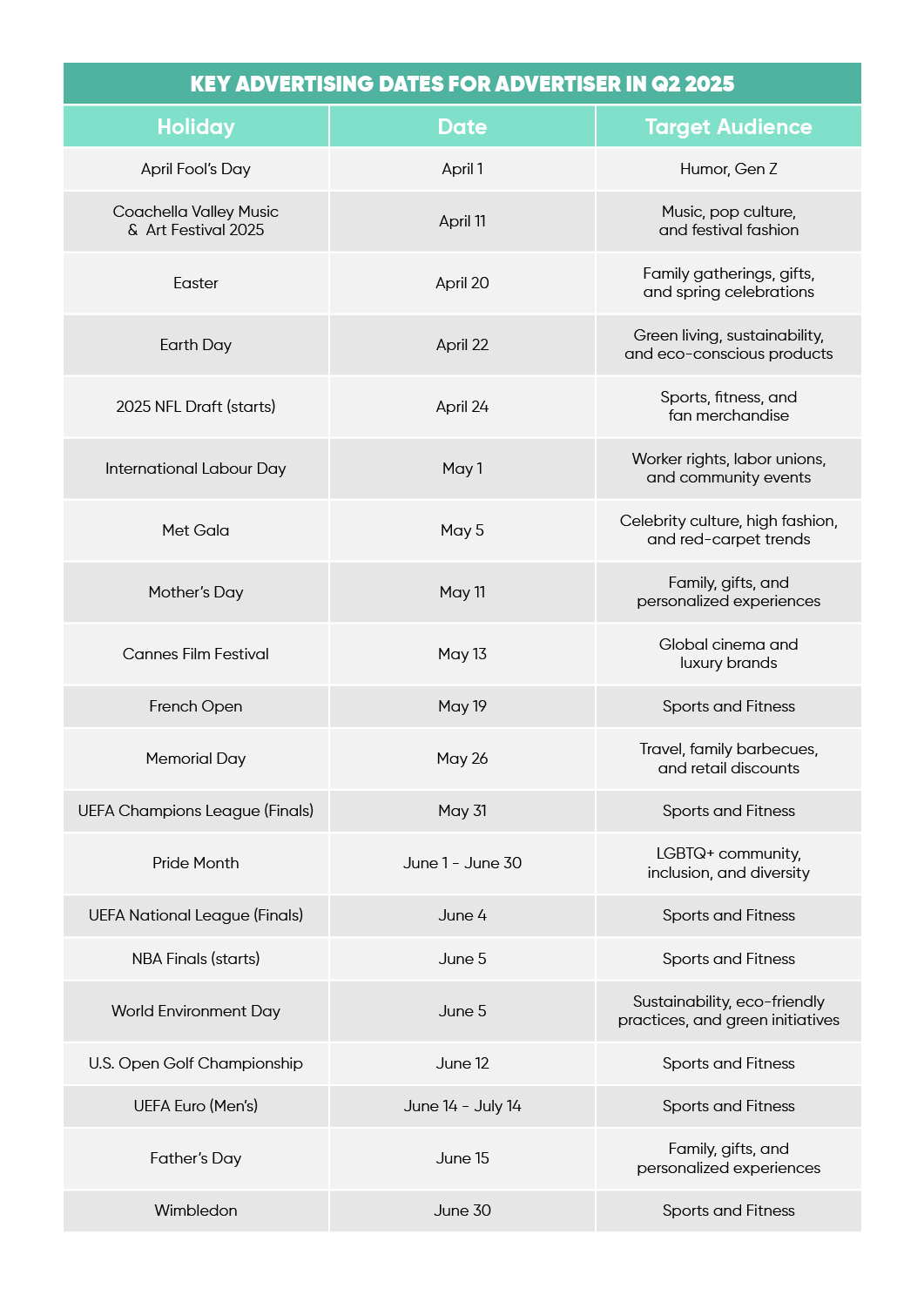
Holidays & Events in Q3 2025 (July, August, September)
Summer gives ample leeway to connect with your audience, even in those moments when the season is seemingly slow. From Prime Day deal sprees, the excitement of Independence Day, down to back-to-school shopping, Q3 is rich in tentpole events that drive engagement. Q3 is also a key period for meaningful tentpole campaigns because it hosts cultural milestones like Hispanic Heritage Month and the worldwide popularity of the English Premier League.

Holidays & Events in Q4 2025 (October, November, December)
Q4 is the crown jewel for your tentpole marketing effort. It is a time when the events around Halloween, Black Friday, and Cyber Monday light it all up for shoppers: anything from holiday shopping, including Diwali across various cultures, to New Year’s Eve. Your advertising calendar will be filled in fully, so make all these moments an opportunity to round up your year with flying colors in the last quarter of the year 2025.
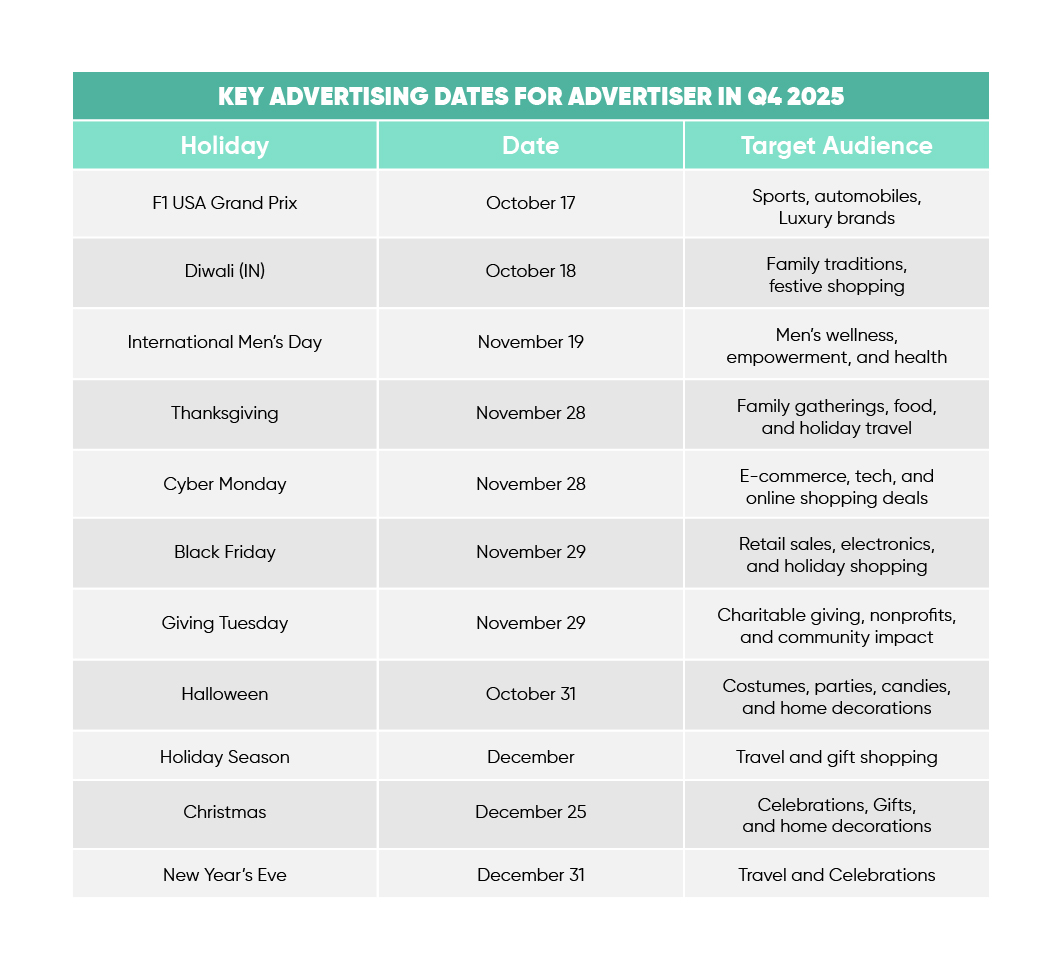
Wrapping Up
Of the moving sands of tentpole marketing, flexibility, authenticity, and audience-focused approaches probably hold the largest potential for success. Monitor the real-time feedback of your audience’s participation and metrics to keep your campaigns relevant and impactful. By pointing your efforts toward 2025 tentpole events that echo values of greatest importance to them, trust is nurtured, and real connections are made.
And don’t forget to give equal time to analyzing and optimizing your campaigns by tracking those performance metrics, such as engagement rates and ROI. That way, you’ll be sure you’re not just part of the conversation but leading it. With a well-thought-out tentpole strategy, you’ll be able to make any event an opportunity to grow, connect, and inspire.
Let 2025 be the year your brand shines at moments that matter!
Top Advertising Trends You Can’t Miss in 2025
PUBLISH DATE: 12 December 2024
Advertising trends come and go, but some campaigns leave an unforgettable mark. Think about Nike’s 1988 ‘Just Do It’ ad or the memorable ‘Share a Coke’ campaign—what makes them stick? They didn’t just sell a product; they captured the cultural moments and spoke to their audiences in ways that felt personal and relevant.
As we inch closer towards 2025, the ad industry is in for a sea change all over again. With global advertising spending projected to hit $1 trillion in 2024, the stakes for marketers have never been higher. So, let’s dive into the key trends in advertising reshaping strategies, and unlocking opportunities in 2025.
1. The Rise of AI-Powered Advertising
AI is making advertising game-changing from “nice to have” to “have to have.” Searches for “AI advertising” have increased by 557% over the last two years, showing brands are tapping into its immense potential. According to Statista, 80% of digital marketers will integrate some form of AI into their strategies, and AI will form the backbone of modern advertising.
AI-powered tools, like Dynamic Creative Optimisation (DCO), let you create ads in real time that warm up audiences when a cold snap hits. Predictive analytics, which enables brands to anticipate consumer needs even before they do.
Platforms like Netflix and Amazon have perfected this, using AI to recommend shows or products that align with your preferences. Success stories like RedBalloon, which tested thousands of ad variations daily, show how AI can drive seriously impressive results, including a return on ad spend of 1,100%.
Beyond increasing performance, AI saves time and refines targeting while even creating ideas. And if you haven’t leaped into the pool yet, now’s the time; AI is not just the future of advertising—it’s the present.
2. Short-Form Video Content: The New King of Engagement
Gone are the days when consumers would patiently sit through long, drawn-out ads. TikTok, Instagram Reels, and YouTube Shorts have ushered in a new era of bite-sized, high-impact content to stay.
For example, a study revealed that 36% of marketers are of the view that short-form videos drive the highest ROI. Why? Because these videos hook instant attention and convey a message in under a minute-perfect for today’s on-the-go audience.
Storytelling is the success mantra for your brand. Be it a funny skit, an emotional tale, or a bold call to action, the short-form videos just need to leave a mark. Remember, visuals are as important as the message. Optimize for mobile-first, vertical viewing, and use captions to keep your story accessible even when viewed on mute.
In 2025, short-form content isn’t just a trend; it’s a must-have for modern advertising. Scroll-stopping videos are now the driving force behind campaigns that engage audiences and deliver measurable results.
3. Authenticity in Social Media Advertising
Social media has made it crystal clear that consumers are craving authenticity. Flashy, overpolished campaigns simply won’t cut it because modern audiences want to see the real, raw, and relatable side of your brand.
Research proves that 39% of consumers value authenticity most when learning about a brand, hence the importance of partnering with influencers that align with your brand ethos, especially micro, and nano-influencers with highly engaged audiences when building trust and loyalty.
Another powerful tool in your armory is user-generated content. Whether it’s a glowing review, an unboxing video, or customers using your product, UGC adds a level of credibility that traditional ads often can’t match.
4. Privacy-First Advertising: A Necessity, Not a Trend
In 2025, consumer privacy will be at the forefront of advertising strategies. With regulations such as GDPR and CCPA already setting the pace for how brands should handle consumer data, it’s crystal clear that privacy is no longer a buzzword but a necessity.
The phasing out of third-party cookies is pushing brands to change their approach towards targeting. The rapidly rising contextual targeting, where advertisements are served based on viewed content and not browsing history, is becoming the alternative go-to solution. It’s a privacy-friendly way to serve relevant ads that resonate.
Moreover, first-party data—gathered directly from your audience—is becoming increasingly valuable. By fostering trust and encouraging consumers to share preferences willingly, you can craft personalized, privacy-compliant campaigns that drive results.
The key takeaway? In 2025, trust will be your brand’s most valuable asset. Transparent data practices won’t just help you comply with regulations—they’ll help you build stronger, more meaningful connections with your audience.
5. Programmatic Advertising: Smarter, Faster, and Growing
With privacy-first strategies redefining the use of data, programmatic advertising is revolutionizing how brands connect with audiences. By automating ad buying, marketers can serve the right message to the right person at the perfect moment, driving real results with precision.
In 2025, the programmatic technology will be even more sophisticated. Features like predictive analytics will let brands predict consumer behavior and optimize ad spending for maximum ROI. Meanwhile, programmatic continues to grow into new channels, including connected TV and mobile, opening up a whole new world of possibility in deeper engagement.
A programmatic boom will hit emerging markets, too. With improving internet access and digital adoption across Asia, Africa, and Latin America, advertisers increasingly apply more programmatic strategies to reach target audiences in the areas. Improved infrastructure combined with a more digitally literate population ought to drive a spike in the use of programmatic display ads, unlocking new opportunities for brands that need scale and growth.
Final Thoughts
In 2025, the digital advertising market is evolving rapidly and opening up challenges and opportunities alike. From leveraging AI to predict consumer behavior to crafting emotionally resonant stories, the latest advertising trends are all about forging meaningful connections with audiences.
To stay ahead, brands have to move with innovation and adopt strategies that balance the latest technology with trust. For example, brands like Netflix are already using AI-driven insights to deliver hyper-personalized recommendations, while platforms like TikTok drive engagement with authentic, user-generated content.
So, what’s next? Discover the top advertising trends for 2025 and create a future-proof strategy that will make your brand stand out in a fast-changing market.
Breaking Tradition: Innovative Marketing Strategies for Vietnam Tet 2025
PUBLISH DATE: 18 November 2024
One of the most significant cultural events for the Vietnamese, Tết Nguyên Đán, or the Vietnamese Lunar New Year, is almost here. Marking the beginning of spring, this time of year has, for generations, been a season for family gatherings, delicious feasts, and honoring ancestors. The week-long holiday witnesses the Vietnamese completely in their elements, with their party boots on, and the city lit up with sparkling lights and faces of absolute joy.
To maximize sales during the festive season, brands traditionally launch Tet-specific campaigns well in advance, tapping into the holiday’s deep emotional ties to nostalgia, family values, and reunions.
However, as brands prepare for Tet 2025, shifting Vietnamese sentiments can’t be ignored. Industry insiders report a 47% year-over-year dip in consumer engagement during Tet 2024, with discussions on traditional themes losing traction on social media. In this landscape, brands must rethink strategies to stay competitive.
Challenges Faced in Vietnam Tet 2024
As Vietnam Tet 2024 unfolded, brands faced unprecedented challenges in adapting to shifting consumer sentiments and evolving traditions, disrupting long-standing advertising strategies.
Growing Discontent with Holiday Demands
As discussed above, the year 2024 brought a flurry of changes in the way the Vietnamese public celebrated Tet. For instance, a change in the topic of discussion, with a growing discourse on the ‘tired of tret’ sentiment was witnessed in 2024.
Many consumers started expressing discontent with the pressures of holiday demands, with traditional themes such as cooking, gift-giving, and cleaning, no longer resonating with the consumers. This posed a significant challenge for the brands who are used to relying on tried-and-tested ad themes to reach their consumers.
Preference for Simpler Celebrations & Decline in Family Reunion
Consumers shifted towards simpler celebrations, focusing on relaxation rather than elaborate traditions. This shift in consumer sentiments extended to a change in attitude towards family reunions. While historically family reunions were the highlight of the event, giving brands a chance to emotionally anchor their messaging, discussions regarding it decreased by 77.5% in 2024. This change suggests a growing ambivalence towards family reunions due to reasons like financial pressure or the hassle of traditional preparations.
The rising cost of living and the fast-paced nature of modern life have contributed to this change. Instead of the elaborate rituals that once defined the season, many people are now prioritizing relaxation, simplicity, and emotional well-being over long-standing traditions. This presents a new challenge for brands that have historically relied on the nostalgic allure of Tet to drive their campaigns.
These shifts reflect a new challenge for brands that have long relied on nostalgia and tradition to drive their Tet campaigns. As Tet festival evolves to become more about convenience, comfort, and relaxation, brands must keep up with these changing trends to form deep connections with their audiences.
Before we delve into strategies that brands can adopt to ensure a successful Vietnam Tet 2025 campaign, let us dive into some consumer insights:
- Shift in Timing: The peak discussion period for Vietnam Tet has shifted, with conversations now spread over a longer timeframe, suggesting brands should start campaigns earlier.
- Changing Topics: The topic of “reunion” fell out of the top five discussions, reflecting a decrease in excitement around family gatherings.
- Emotional Focus: Increased discussions around feelings like “looking forward to Tet” and “bored with Tet” highlight evolving consumer sentiments.
- Shopping Behavior: Consumers begin shopping for Tet festival three weeks in advance, utilizing multiple locations such as supermarkets, grocery stores, and wet markets.
Strategies for Vietnam Tet 2025 Success
As we look forward to the next year, brands must adopt a fresh and innovative approach to stand out during Tet 2025. Let’s look at a few strategies that will maximize the impact of your Vietnam Tet ad campaigns.
1. Adapt to Shifting Consumer Sentiment
A key to having an effective advertising campaign is to keep up with the latest trends and customer needs. When it comes to Tet 2025 advertising campaigns, brands must move away from traditional themes of family reunions, nostalgia, and honoring traditions. As per research by Buzzmetric customers today are more responsive to ads that focus on simplicity, emotional connection, and relaxation.
2. Innovate Beyond Nostalgia
Nostalgia marketing has long been recognized as an important tool for targeting customers. This strategy involves using people’s positive memories of the past to promote products or services, by forming an emotional bond. While nostalgia remains a powerful strategy, it has become overused with time. In fact, as per industry research Vietnam Tet 2024 was marked by a significant decline in consumer interest, and brand investment, reflecting how reliance on nostalgia is no longer working for brands.
It has therefore become necessary to add a modern twist to this approach, to utilize its power of emotional resonance while keeping up with the latest needs for comfort, security, and humor.
To attain this and navigate the era of reduced enthusiasm around Tet, brands must adopt the NSFW (Nostalgia, Security, Funny, Worth) advertising method. By utilizing this approach, brands can foster emotional bonds through a modern and approachable interpretation of Tet, while reassuring consumers during uncertain times through humor and a focus on the perceived value of products over discounts.
3. Leverage AI-Powered Contextual Advertising
Traditional targeting tactics often lead to consumers being bombarded by advertisements, even at inopportune moments or unsafe contexts, resulting in waste of ad spending and ad fatigue. It is time to move beyond traditionally utilized programmatic keywords that rely on broader keyword targeting and third-party cookies. To stand out during Vietnam Tet 2025, brands must utilize the power of AI-powered contextual advertising that leads to precision targeting.
By using contextual intelligence brands can ensure that your brand’s ads are placed at the right place at a time when consumers are highly engaged. Not only that, by using AI-driven solutions brands can sync and adapt their ads with the most trending moments, ensuring they resonate with people in real time.

Discover Vietnam’s Tet 2025 Consumer Trends
Conclusion
In a nutshell, as 2025 approaches, brands need to look into the past lessons from 2024 and adapt to the evolving consumer sentiments for the coming year. To effectively connect with consumers during Tet 2025, brands need to move away from the traditional themes of Tet and shift to newer, innovative themes that will resonate with modern consumers. By embracing innovative strategies of advertising such as NSFW and AI-powered contextual advertising, brands can successfully navigate the complex 2025 Vietnam Tet landscape, fostering meaningful connections and standing out in a competitive market.
5 Proven Black Friday and Cyber Monday Marketing Strategies for 2024
PUBLISH DATE: 24 October 2024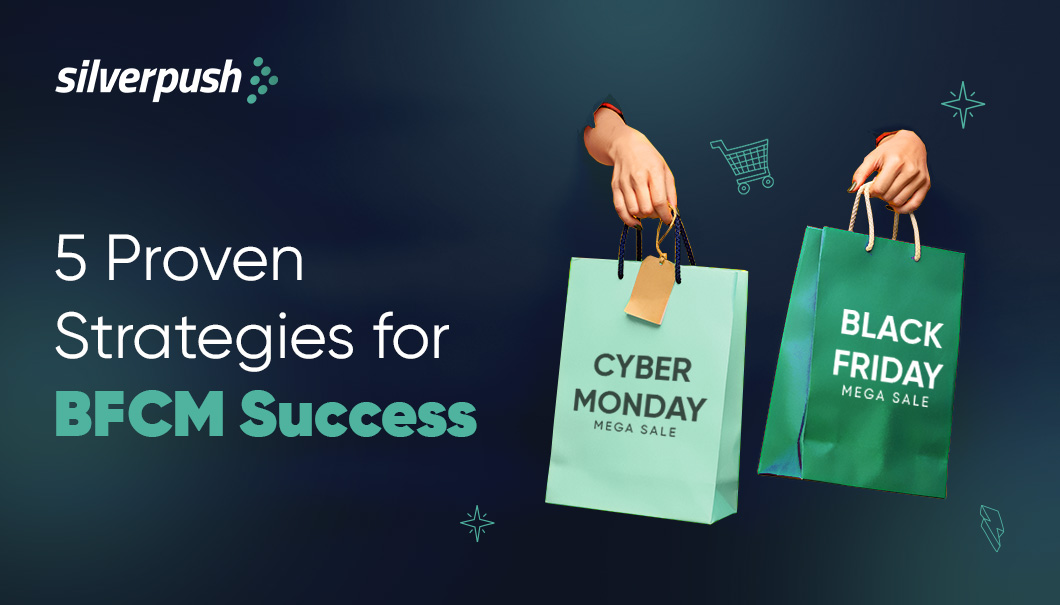
Black Friday and Cyber Monday (BFCM) are no longer exclusive to the U.S. market. It has gone global and is now one of the most important dates when every business wishes to ensure a spike in their online or in-store sales. With customers hunting for the deal, e-commerce businesses and brands need to get their acts together through intelligent, efficient BFCM marketing strategies that set them apart. Here are some surefire digital marketing strategies to help you make the most of this Black Friday and Cyber Monday.
1. Plan Your BFCM Marketing Campaign in Advance
The golden rule of any effective Cyber Monday and Black Friday marketing campaign is early planning. Since the competition increases annually, businesses need to start their marketing preparations for this day well in advance.
First, create a very detailed customer profile based on insights from the past. Study previous BFCM campaigns that you ran and identify essential customer behaviors and purchasing trends. You want to use that information to create targeted messaging and personalized ads that really speak to your audience.
If you know, for example, that sales in electronics spiked early last year, you may want to launch promotions early, ideally in late October rather than wait for Black Friday itself.
Also, make sure your marketing channels-email, social media, and paid ads are in concert with each other. The result of all that is that when you launch a campaign together, having done quite a lot of research on consumer trends, you will catch the attention of deal-oriented shoppers.
2. Using Storytelling to Connect and Convert
How will you stand out when shoppers are bombarded with thousands of ads leading up to Black Friday and Cyber Monday? By telling stories that connect with your audience.
Storytelling taps into those selling emotions, making connections on a deeper level with the consumer than mere product promotion. Visualize the feelings such as joy, nostalgia, and gratitude during the holiday. A campaign featuring touching family reunions or special holiday traditions will make your products memorable. With those emotions, brands can use their touching messaging to show just how their offerings enhance these special moments.
Video advertising is a great way to amplify such strategies. It is easy to capture these emotional stories with a short video, regardless of whether it is humorous or sentimental. Since holiday shopping focuses a great deal on promotions and discounts, adding emotional storytelling to your advertising can help your brand differentiate itself and increase customer loyalty.
For example, watch this ad from IKEA. The essence of the festive season is captured within one minute; the bond between this child and her grandma is full in the air. It is short, sweet, and leaves a positive effect on viewers.
After all, this approach is not about quick sales; it’s about leaving long-lasting impressions long after the holiday rush. That way, your brand becomes part of their treasured holiday experience, and emotional engagement translates into tangible ROI.
3. Create Excitement Before the BFCM Rush
The secret to a successful BFCM is to build excitement. The sooner you can create buzz, the more momentum you’ll build heading into Big Weekend. Interactive and dynamic ads are ideal for this.
For example, you could use shoppable video content. These ads let your target audience buy your products directly from the video, reducing friction in purchase paths. Reduce friction, and you’re going to increase your chance of conversion.
Another effective tactic involves dynamic countdown ads. The ads dynamically show the countdown to either the start of your sale or how much time remains before a certain deal ends. This will encourage actions since nobody wants to miss a good deal, especially when the clock is ticking.
4. Deliver Ads That Match the Moment, Not the Data
As the focus on user privacy ramps up hugely in response to recent cookie regulations, contextual targeting in digital marketing is becoming a force to be reckoned with. While personal data is utilized in certain forms of ad placement, contextual targeting makes it possible for one to display ads based on the content a user is currently viewing. For example, if a web user is reading a blog about “the best tech gifts for Christmas,” your Black Friday ad related to tech gadgets seems to naturally fit.
Silverpush’s Mirrors, an AI-driven contextual intelligence solution, takes it a notch higher with contextual detection, identifying celebrity name, brand name, objects, and activities within the video for correct ad placements. This ensures seamless engagement and more positive brand recall by aligning ads with relevant content at key moments.
Additionally, it also offers complete brand safety, blocking unsafe content without compromising reach, and dynamic campaign delivery optimizes performance in real-time. This makes certain that the brand will deliver a personalized and privacy-compliant ad experience that is sure to create maximum engagement on Black Friday and Cyber Monday.
5. Take Advantage of Dynamic Retargeting
Customers will most definitely look across various sites, add items to a shopping cart, and abandon the whole purchase during Black Friday and Cyber Monday. This is where dynamic retargeting comes into play.
Dynamic retargeting allows one to serve personalized ads to users per their product interest. Suppose a user was viewing a pair of boots on your site and did not purchase them; you can serve him with a retargeting ad with the very same boots, with a limited-time discount offered, to spur the likelihood of purchase.
The importance of building retargeting pools early in the season cannot be understated. In fact, if you start tracking user behavior weeks in advance of BFCM, you will later be able to retarget users who have had some interaction with your site and show them relevant ads when the shopping frenzy starts. Retargeting works amazingly well for high-consideration products, which require multiple touches before a purchase can be made.
Conclusion: Start Planning for BFCM 2024
As we go into the holiday season, it cannot be emphasized enough just how critical an effective Black Friday and Cyber Monday strategy is. Early planning, emotional storytelling, innovative ad formats, and precise targeting will position you to build campaigns that not only increase sales but cultivate strong, lasting relationships with customers.
Take time to understand the performance of your campaign by learning from the data. You will, in turn, further fine-tune your approach for BFCM 2024 and beyond. And the sooner you get started planning, the better positioned you’ll be for success.
Why News Content is a Goldmine for Advertisers: Debunking Brand Safety Myths
PUBLISH DATE: 23 October 2024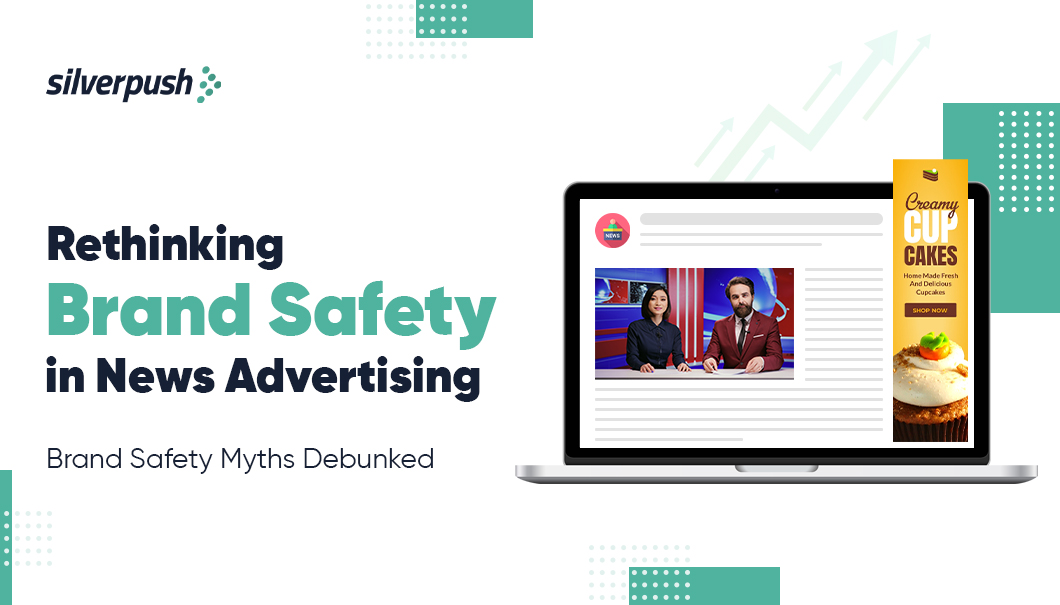
Brand safety concerns have long clouded advertising alongside news content. As a marketer and advertiser, you might think twice before placing your ads against news stories, fearing harm to the reputation of your brand.
However, new findings by Stagwell challenge those longtime fears, showing that advertising in news environments could be just as safe and effective as it is traditionally in positive settings such as sports and entertainment.
In this post, we will uncover some common myths about brand safety in news advertising and show why news content stands out for its marketing opportunities for advertisers like you.
Myth #1: News Content is Unsafe for Brands
Many marketers believe that advertising adjacent to controversial or sensitive news topics has a negative impact on their brand. The concern is that it creates a linkage in the consumer’s mindset to political turmoil, a crime report, or news of conflict with your brand.
However, such was not the case in this study from Stagwell. Ads appearing next to news content—including political news, demonstrated no decline in purchase intent or consumer favorability. In the Stagwell study, Coca-Cola ads were tested near political news, the news ads showed a purchase intent of 62%, compared to 61% for entertainment and 64% for sports news.
This suggests that brand-safe advertising is achievable regardless of content type, or at least to a certain extent. Topics tested included ‘Middle East’, ‘crime’, and ‘Trump/Biden’, highlighting the potential for news media to play a key role in brand advertising.
Myth #2: Ads Next to Negative News Harm Brand Image
There’s an irrational fear that any negative or controversial news automatically damages a brand’s reputation. Research shows that consumers are relatively comfortable seeing ads next to negative news, provided the news source is trustworthy. Trusted journalism advertising can actually enhance your brand’s perception rather than harm it.
Additionally, relying on keyword blocklists to avoid negative content often results in missed opportunities. Words like “war” or “bomb” can have benign uses in various contexts, meaning your ads are unnecessarily blocked from appearing alongside quality news content.
💡 The Untapped Potential of News Content
News content is unparalleled in audience engagement. News interests a greater audience segment than entertainment and sports combined, with highly engaged readers who actively make an effort to seek out information. High engagement leads to high purchase intent and high brand trust. According to specialists in the industry, through news environments, brands are able to reach audiences that are not just interested but deeply engaged with the content. By leveraging high-quality news content and advertising, you can reach motivated audiences and amplify your overall marketing effectiveness.
Myth #3: Technology Can’t Guarantee Brand Safety in News
Another common myth is that technology can’t ensure brand safety within news environments. The truth is that new developments in AI and contextual targeting tools have transformed brand safety content. These AI-powered solutions will make semantic data possible and curate contextual content with precision, having controlled ad placements.
Some contextual intelligence solutions like Silverpush’s Mirrors go one step ahead in contextual detection, detecting celebrity name, brand name, and activities for optimum view of all ad placements. This solution helps you bypass sensitive topics with custom inclusion and exclusion themes while appearing in relevant, high-quality news contexts and mitigating ad misalignment.
With real-time monitoring and local insights, Silverpush also amplifies brand safety while filtering unsafe content without losing reach. It comes to achieve a personalized, privacy-compliant ad experience that maximizes engagement and drives positive brand recall.
💡 Realigning Brand Values with News Advertising
The type of news content you choose to advertise alongside should be aligned with your brand values. Contextually aligned and suitable ad content adds value to your brand message and outcome. Brands like Ssense and Maybelline capture cultural trends by advertising alongside relevant news stories and resonating with consumers who value mindfulness and cultural relevance. You can drive even more positive results while maintaining always-on brand-safe advertising by tailoring campaign content to meet the particular consumer threshold and working closely with partners.
Myth #4: Keyword Blocklists are the Best Way to Ensure Brand Safety
Keyword blocklists have, for a long time, been a blunt instrument employed by advertisers wanting to avoid making their ads appear against undesirable content. This is a very outdated practice that’s often counterintuitive. For example, blocking terms like “dead” may protect ads from showing relevant content, such as an article covering a Grateful Dead concert.
Instead of blocking these terms, solutions such as Silverpush’s contextual intelligence solutions can offer smarter optimization that intelligently balances risk while using advanced filtering to avoid overblocking. These AI-driven methods ensure better control of the ad placements without losing out on the engagement, hence brand-safe, yet at the same time, maximize the ROI, reach, and effectiveness of ad campaigns.
The Future of Brand Safety in News Advertising
The future of brand safety in news advertising is being shaped by AI and advanced technology. Tools like Silverpush’s contextual intelligence solutions use AI to deliver precise ad placements by analyzing the context and sentiment of news content. Their Human Augmented Filter makes sure AI-driven insights are verified by human oversight to reduce AI errors or “hallucinations.”
Additionally, it keeps advertisers up-to-date about best practices, balancing the leading edge of technology with human vigilance. In sum, those advertisers that lead in harnessing these technological changes but with continued human vigilance are in essence opening up new avenues of reach and impact in news environments, ensuring that the ads are safe and effective.
Wrapping Things Up
News content is a powerful and safe space for brands when approached in a strategic fashion. The myths of brand safety within news advertising grow increasingly ungrounded due to developments in technology and supportive research. Those brands that reconsider their fears by leveraging quality news content advertising can experience increased engagement, trust, and purchase intent without compromising on their brand integrity.
If you want to see how Silverpush can help your brand reach relevant audiences in a brand-safe and suitable news environment, then reach out to us today and book a demo to see how AI-driven contextual intelligence helps drive better marketing effectiveness.
Decoding the Digital Holiday Shopper: A Guide for Brands
PUBLISH DATE: 10 October 2024
It is almost that time of year again—the time when the streets are decked with lights and joy is all around. The holiday season is around the corner, and with it comes the bittersweet joy and stress of gift buying. Indeed, research suggests that holiday shoppers these days start planning, curating, and buying gifts as early as October.
Consumer spending during the upcoming holiday season is forecasted to increase by 40% compared to the previous year, fueled by an impressive 2 billion shoppers. This presents a huge opportunity for brands to substantially increase their brand awareness and engagement while meeting their year-end goals.
However, the festive season shopping landscape can be fiercely competitive, with many brands vying for consumer attention. So, in such a saturated market ecosystem, how can a brand make sure it makes it to the top of the holiday shopping gift list?
The Digital Advantage
To answer this question, it is critical to understand the pivotal role digital advertising plays in the modern shopper’s purchase journey. According to research, more than half of the shoppers are influenced by digital ads, with a huge chunk motivated to buy a product or service after seeing relevant discounts or promotions. Not only that, 70% have purchased a gift on a website after viewing a digital ad.
Digital advertising can help you achieve your targeted success metrics multiple times over, delivering a strong return on investment and boosting your bottom line. Here are four digital advertising favorites you must not miss out on this holiday season:
1. Video Advertisement
In the arena of insatiable audiences constantly glued to digital screens, it has become increasingly tougher to capture the attention of the viewers, especially during the holiday season. While the global advertising market has faced a significant slowdown in growth in the last 5 years, the digital video advertising market is projected to grow at a monumental rate of 5.83% year-on-year rate.
With 80% of internet traffic being contributed by video streaming and 4 billion videos being watched every day, the power of video advertising cannot be overstated. It comes as a little surprise that video ads have emerged as an effective method to capture the elusive attention of the target audience.
In fact, recent research suggests that over ⅓ shoppers were included to purchase a product or service after watching a video ad. As shoppers turn their attention to digital platforms like YouTube, videos can be utilized to provide a captivating and memorable experience. Research by Personify suggests that 88% of marketers agree that video marketing has amplified their Return of Interest (ROI), leading to increased brand awareness, recall, and engagement.
2. Hyper-personalized Ads
In an age where consumers are constantly bombarded by advertisements, hyper-personalized ads are the way to go if your brand wants to stand out. By tailoring your advertising content according to the subjective preferences of the consumer and utilizing contextual cues, brands can deliver ads that foster deeper and more meaningful connections with the target holiday shoppers.
According to research, 91% of holiday shoppers are more likely to shop with brands that provide relevant offers and discounts. While contextual advertising can be an effective method of delivering personalized digital ads, it is often limited to broad topics or keywords, making granular targeting complicated. This is where advertising leveraging the power of contextual AI comes in.
AI-driven contextual hyper-personalization analyzes user content to identify contextual cues like themes, sentiment patterns, and topics that resonate with holiday shoppers. It then aligns advertisements to relevant context, brand messaging, and goals. Therefore, by leveraging the power of hyper-personalized ads, you can add a personal touch to the brand campaign, creating a more meaningful and effective holiday marketing campaign.
3. Interactive Ads
Another advertising favorite that is primed to trend this holiday season amongst brands is interactive video advertising. As per a study conducted by the State of Video Marketing Report, 17% of marketers intend to incorporate an interactive video marketing strategy this festive season.
But what do we mean by interactive ads? Interactive video ads are the ones that turn the viewers from passive spectators into active participants by smoothly integrating touchpoints like quizzes, clickable features, etc. By removing the gap between the advertisement and the spectator, this innovative ad format effectively captures the attention of an easily distracted online audience. Let’s briefly look at a few statistics that showcase the advantages of using interactive video ad formats.
- Interactive Adverts lead to a 47% increase in time spent with the ad
- Click-through rates on interaction videos are 10X higher than on passive video
- 32% of consumers are more likely to remember an interactive even if they don’t engage with it, unlike a traditional ad.
4. QR-enabled CTV
A new form of advertising that has shaken the digital advertising world to the core is QR-enabled connected TV (CTV). While traditional CTV was being used by brands for quite a while for advertising, the platform lacked user interaction and creativity. Two obstacles QR-enabled CTV ads are here to resolve.
Bridging the gap between the audience and the ad, this ad format allows users to interact and take immediate action and is increasingly becoming the new Call-to-Action (CTA). As per Flowcode 2023, 48% of consumers are likely to scan a QR code to learn more about the product or service advertised. By combining the massive reach of the TV with the interactivity of digital ads, QR-enabled connected ads are primed to curate the most engaging ads, helping brands craft deeper connections.
Final Thoughts
As the holiday season draws nearer, it gives the ideal opportunity for brands to connect with their target audience in a deeper and more connected manner. While the technology in the digital landscape continues to evolve at Silverpush we endeavor to be at its forefront, guiding brands to new heights of success. By leveraging our holiday season digital ad favorites, you could have the key to a successful holiday advertising campaign in your hands.
The YouTube Effect: How Brands Are Seeing Mind-Blowing Results!
PUBLISH DATE: 10 October 2024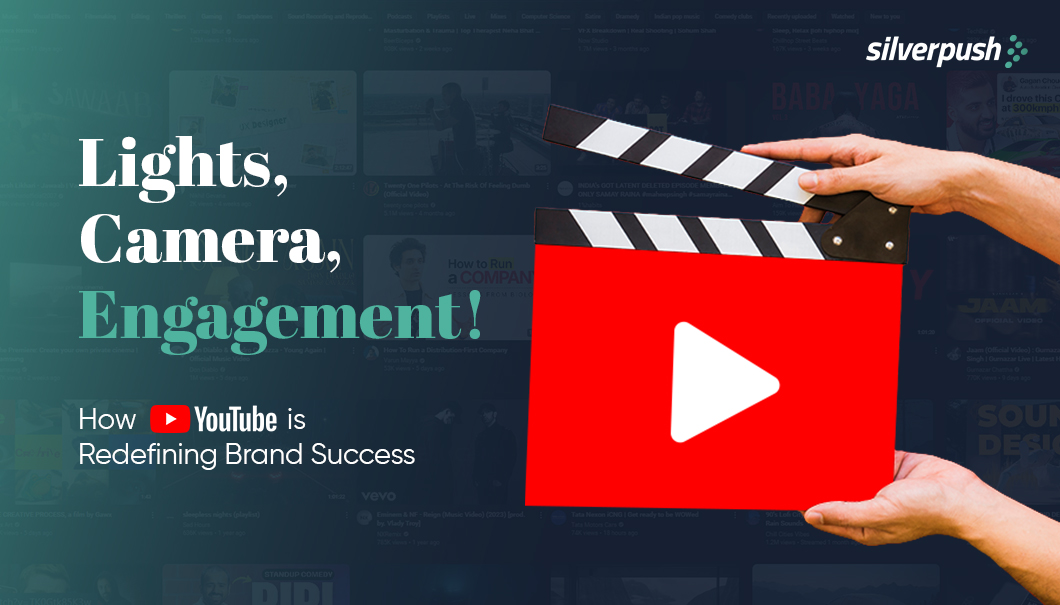
Welcome to a new era of entertainment, where YouTube isn’t just a platform—it’s a cultural phenomenon. A few years ago, who would have thought that creators from all corners of the globe would rival traditional TV networks in popularity? Today, YouTube is the third most visited website worldwide, with users consuming an incredible one billion hours of content daily. As viewers shift from traditional TV to digital platforms, YouTube has become the go-to destination for entertainment, education, and everything in between. This shift presents brands with a golden opportunity to connect with engaged audiences in ways that were previously unimaginable.
Why YouTube is Taking Over TV Screen
YouTube’s dominance in streaming is no accident. According to Nielsen data, YouTube has been leading in streaming watch time for over a year, and it’s now the second most-watched media distributor overall. This shift in YouTube viewership has brands rethinking their TV and digital video investments. Why? Because YouTube isn’t just a digital streaming platform—it’s the new must-watch TV. Viewers are tuning in more than ever, with more than one billion hours of YouTube being watched on TV screens every day.
Take Taco Bell for example. When this fast-food company decided that the customer’s majority of time was being spent on YouTube, they plunged head-on with an hour-long livestream of new menu items, far closer to tech-style keynotes. And the result? Not only did YouTube drive 18% of all incremental transactions, but it also drove double-digit brand lift, proof that YouTube isn’t a place for just views, but a driver of real business outcomes.
Influencer Marketing: The Next Big Thing
Creators are the new Hollywood, and they have the numbers to prove it. To put some stats behind that sentiment, 54% said they would rather actually watch a creator breakdown of some major event than the event itself. That is a level of influence second to none, and brands take notice. By collaborating with creators, brands tap into their unique ability to connect brands and influencers with their followers.
PepsiCo, for example, partnered with Airrack, a popular YouTube creator, for their 125th anniversary. Airrack’s prank video led to millions of views on YouTube Shorts, showcasing the power of creator partnerships. Similarly, Allstate wanted to connect with younger sports fans who aren’t typically found on TV. They teamed up with YouTube creator Destroying and surrounded the entire universe of football content on YouTube, including NFL Sunday Ticket. The result? An 18% lift in brand searches, six times higher than Allstate’s historical results.
AI is the Secret Sauce Behind These YouTube Hits
In the high-speed digital advertising space, every dollar matters. That’s where AI comes in, to drive better performance and efficiency than anyone has ever seen or realized. When Samsung launched the Galaxy S24, for instance, they utilized Google AI to make sure that the right format reached the right audience at the right time. This approach garnered a 6% increase in brand searches and a 13% boost in conversions. AI only amplifies these effects but delivers relevant messages to the right audiences, making the tool invaluable to the modern marketer.
Why Every Brand Needs to Be on YouTube—Here’s What You’re Missing!
What YouTube has that no one else does is scale and engaging content. Be it a Super Bowl commercial or a creator-led ad campaign, YouTube brings together everything a brand needs. Take the case of Booking.com’s Super Bowl commercial featuring Tina Fey. They stitched together their messaging across the consumer journey on YouTube to diversified targets—their messages reached segments of audiences with different content. The result? More than 100 million views in the first week; 35% only saw the ad on YouTube during game week.
A successful YouTube strategy for brands requires a fresh approach to big-screen advertising. Partnering with creators is a great start, but there’s more. Using YouTube Select lineups, which feature the top 1% of YouTube content, helps brands achieve relevance at scale. Leveraging AI for optimization ensures that every piece of creative reaches its full potential, driving better results with less effort.
The Bottom Line
With YouTube today, one reaches audiences in ways no other medium has quite done. From employing influencer power to AI-catalyzed abilities, YouTube is upping the ante for marketers. In the future, too, brand marketing will no doubt continue to be dominated by YouTube, a trend that no other platform can offer. If you aren’t already on YouTube, it’s high time to get on board and check out the myriad of possibilities this platform opens up for your brand.


